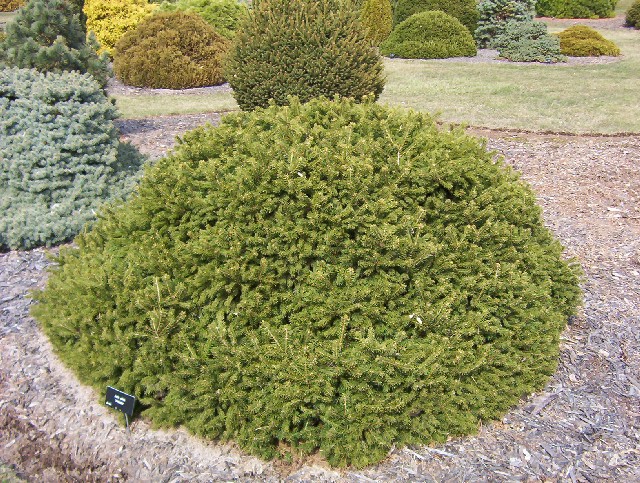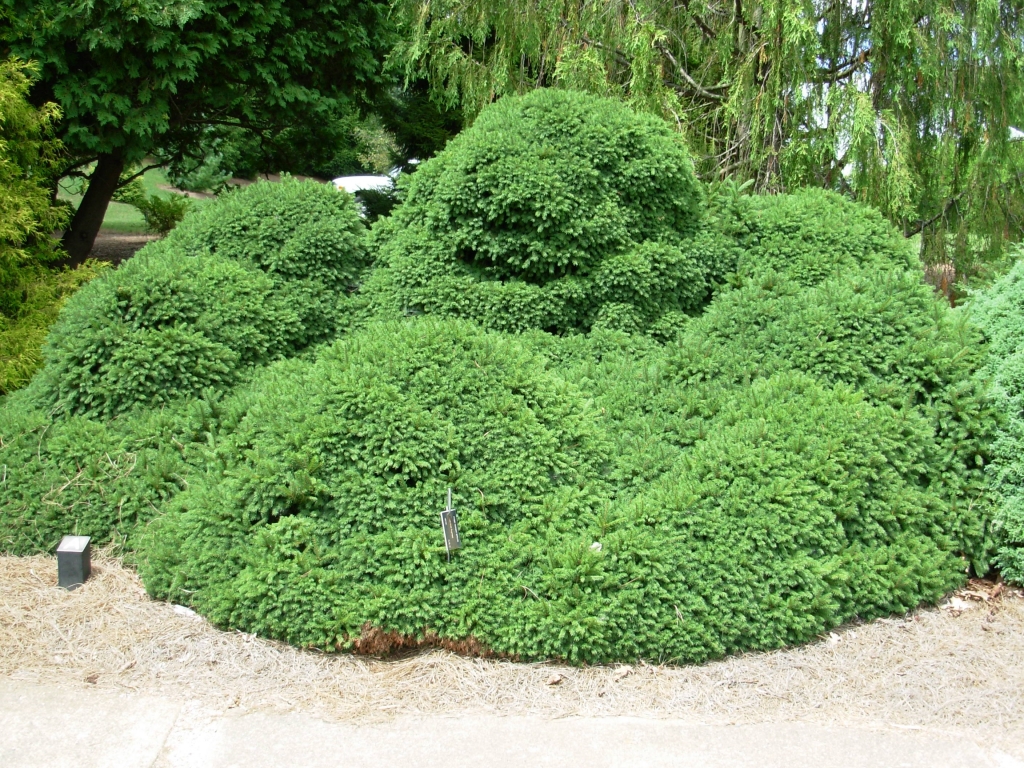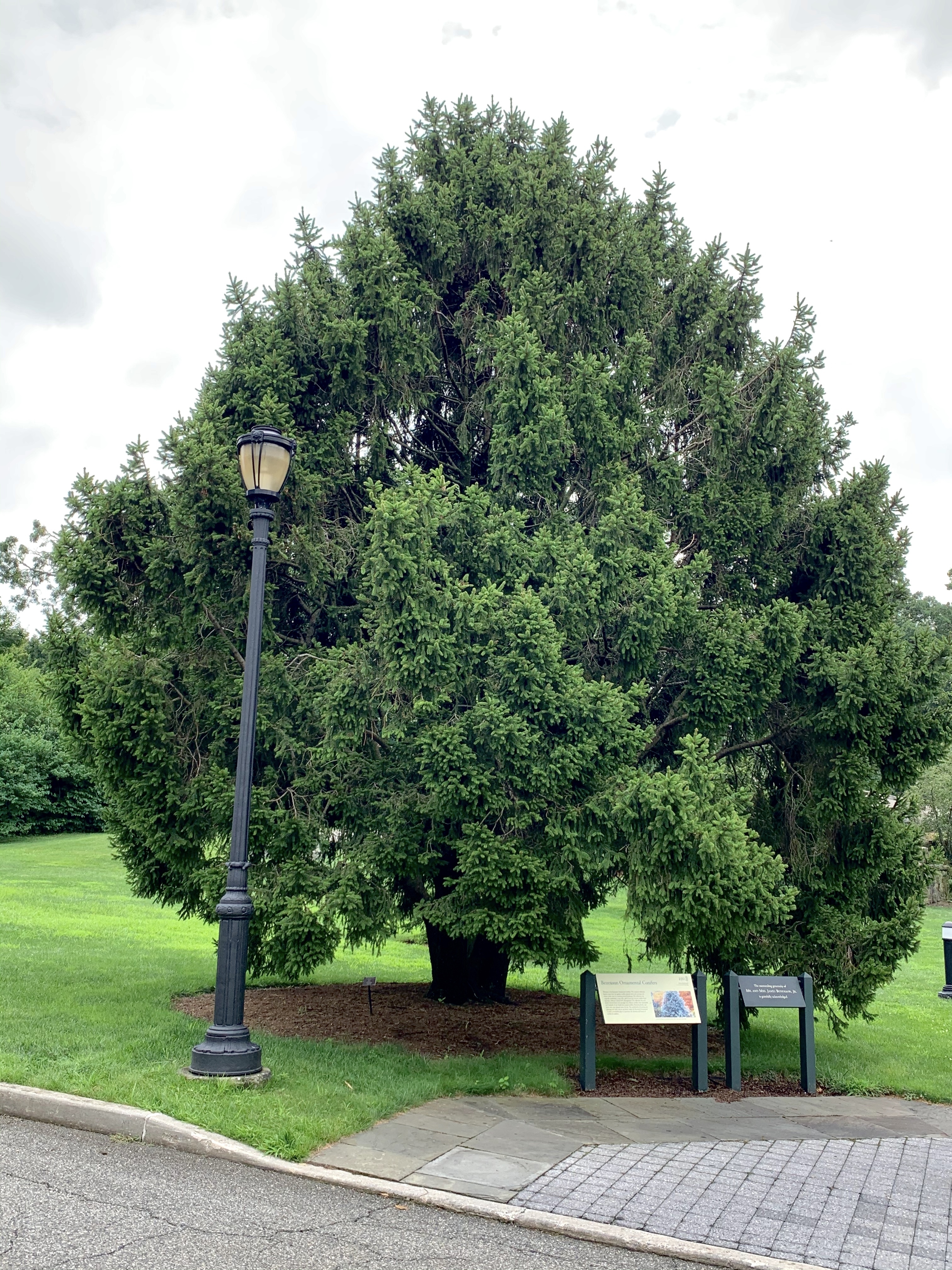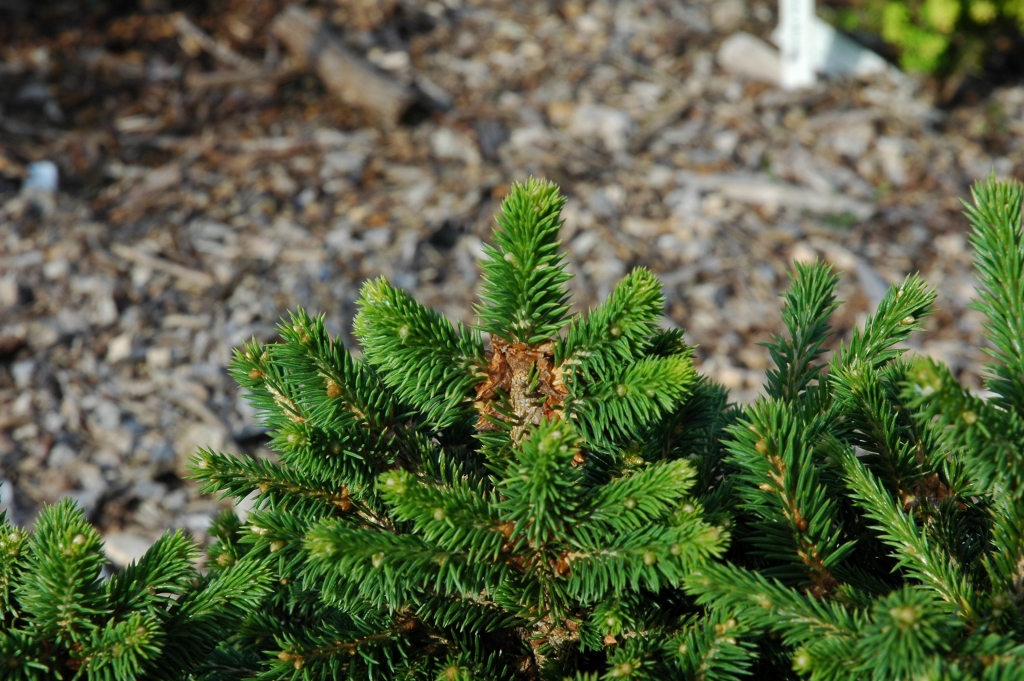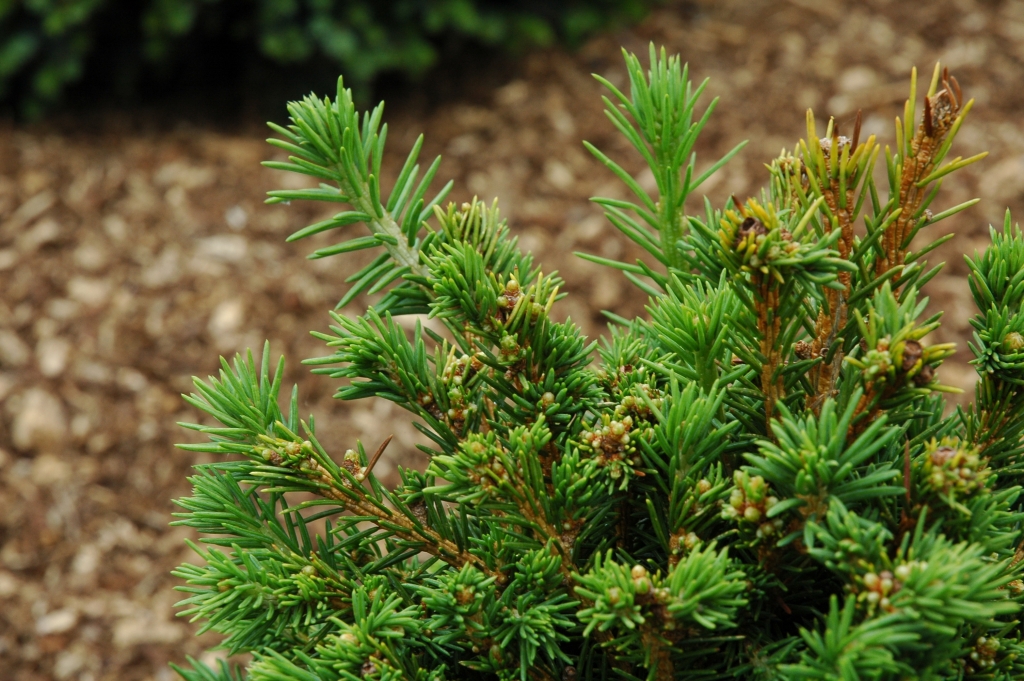Picea abies 'Pygmaea' is one of the first named conifer cultivars in the international nursery trade. It is a very slow-growing, extremely variable, but usually broadly conical dwarf form of Norway spruce with dense branching and shoots display a wide range of vigor, from extremely congested to a few inches long. After 10 years of growth, a mature specimen will measure 2.5 feet (75 cm) tall and 4 feet (1.3 m) wide, an annual growth rate of 3 to 4 inches (7.5 - 10 cm).
[ Adrian Bloom in his book Gardening With Conifers ] correctly states, "several similar variants are available; if you can get the true 'Pygmaea' it is one of the best and oldest, introduced over two hundred years ago."
[ Iseli Nursery of Boring, Oregon ] appears to produce a more globose form. They describe, "a sculptured mound that could be considered living rock. Notoriously variable, but the form is incredibly dense and slow-growing."
[ In Conifers The Illustrated Encyclopedia, D.M. van Gelderen ] also speaks to cultivar variability stating, "this cultivar has a globose form but can also be more or less conical."
As mentioned, 'Pygmaea' is one of the oldest known conifer cultivars, known to arboretums and eclectic gardens since the around 1800. It is of unknown origin. Scottish botanist, John Claudius Loudon formally described it in 1838 in his most significant work, Arboretum et Fruticetum Britannicum.

